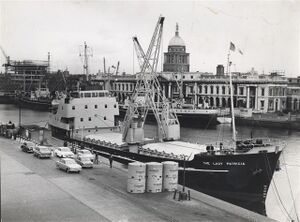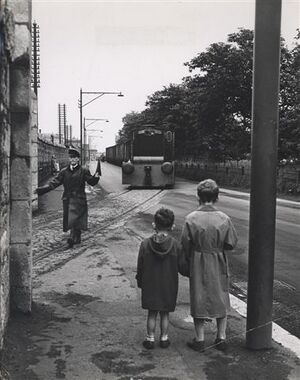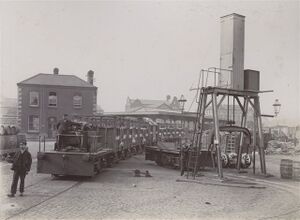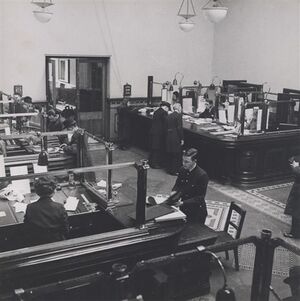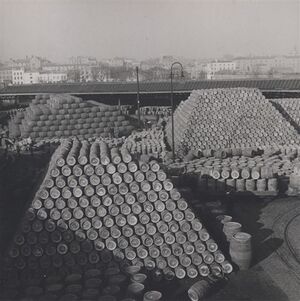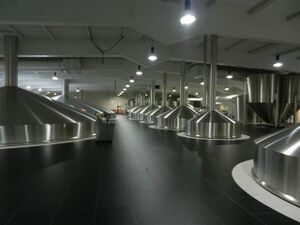Notes on Porter Brewing in Dublin: Difference between revisions
No edit summary |
No edit summary |
||
| Line 29: | Line 29: | ||
When the company went public in 1886, John Tertius retired and was able to invoke an agreement which would pay a shilling a barrel on output since 1780 he got £217,196 and died at Rathmines castle in 1893. The Pursers continued to be prominent in | When the company went public in 1886, John Tertius retired and was able to invoke an agreement which would pay a shilling a barrel on output since 1780 he got £217,196 and died at Rathmines castle in 1893. The Pursers continued to be prominent in | ||
Dublin life, Purser Griffith became port engineer, professor at Trinity and consulted widely on engineering while Sarah Purser was an accomplished artist. On his death in 1939 the Coopers of Guinness brewery sought permission of the family to carry his coffin to the cemetery. There is no mention in the coopers minute book of why this singular honour was bestowed on Purser Griffith. | Dublin life, Purser Griffith became port engineer, professor at Trinity and consulted widely on engineering while Sarah Purser was an accomplished artist. On his death in 1939 the Coopers of Guinness brewery sought permission of the family to carry his coffin to the cemetery. There is no mention in the coopers minute book of why this singular honour was bestowed on Purser Griffith. | ||
[[File:Warrenmount.jpg|600px]] | |||
''Warrenmount was built about 1780 for Christopher Lynch a brewer and sold to Nathaniel Warren who sold it to Philip Lawless another brewer who was brewing at Upper Coombe in 1769. '' | |||
''The house is preserved in the school grounds but the brewhouse adjoins the gate.'' | |||
Latest revision as of 12:44, 22 September 2020
From an essay by Edward Bourke, Blanchardstown
Porter Expertise
Though it is clear that brewers made porter in Dublin as early as 1742 English experts were prominent at the time when porter brewing expanded in Dublin. Dublin Porter developed with the assistance of experts from London.
In Sweetmans, St Stephens Green brewery they advertised in 1780 that their porter was brewed under the supervision of Thrales cooper Mr Scollough. This could hint at the role of charred wooden casks in the role of colouring porter. In 1782 Kavanagh & Brett were brewing under supervision of Mr Page of London. John Gorman Kennedy offered his services to the brewers of Kilkenny in Finns Journal 19-3-1791. He asserted that he had brewed in two Dublin breweries and that the great consumption of porter in Kilkenny would be a suitable proposition involving little extra capital. He gave his address as 28 King Street then Thomas Sherlocks brewery. It may have been precarious because it changed hands after 1785 to Kennedy and Lacy and was Connollys in 1799 and Connolly Somers in 1810. Somers seems to have been some sort of headhunting agency because on 5-9-1819 a Cork Distillery sought an engineer capable of managing two steam engines apply to Somers of South King Street.
Purser
A vital influence on Dublin porter was the input of the Purser family through five generations. On the invitation of Robert Barnewall, John Purser moved to Dublin in that year to work with a Dublin-based brewer, James Farrell of Blackpitts. John Purser senior came from Tewkesbury in Gloucestershire and became a brewer in Leather Lane, London and Hackney. His business did not prosper due to lack of working capital and by 1776 he was working in Reids brewery at Fishpond Street, London. It is clear that John Purser brewed porter commercially in Dublin in 1776 Barnewall wrote at the time of Pursers death in 1781: I engaged Mr John Purser in London to come to Dublin to brew porter for Mr Farrell (brewery at Blackpitts) and I was informed on a very strict inquiry that he was perfectly capable and was very able in that business. Other testimonials came from Mr Farrell, P.M. Sweetman, George Thwaites, Thomas Andrews, Nathaniel Warren and Edward Atkinson. The reason for these testimonials is not clear. They could have been obituaries or might have been for the purpose of transferring royalties to his son. John Purser died at Mallow en route to Cork and he had also consulted on brewing at Drogheda Though there was no testimonial from Arthur Guinness, there were connections. A deed of 1780 has Pursers son as a party and Arthur Guinness granting the deed for property. Johns son John joined Guinness and in turn his son also John Junior joined in 1799 and by 1820 these two were partners in the St Jamess Gate brewery with the Guinness family. John Tertius from the next generation was head brewer by 1858. The family also married the Geoghegan who were the brewery engineers.
When the company went public in 1886, John Tertius retired and was able to invoke an agreement which would pay a shilling a barrel on output since 1780 he got £217,196 and died at Rathmines castle in 1893. The Pursers continued to be prominent in Dublin life, Purser Griffith became port engineer, professor at Trinity and consulted widely on engineering while Sarah Purser was an accomplished artist. On his death in 1939 the Coopers of Guinness brewery sought permission of the family to carry his coffin to the cemetery. There is no mention in the coopers minute book of why this singular honour was bestowed on Purser Griffith.
Warrenmount was built about 1780 for Christopher Lynch a brewer and sold to Nathaniel Warren who sold it to Philip Lawless another brewer who was brewing at Upper Coombe in 1769.
The house is preserved in the school grounds but the brewhouse adjoins the gate.
